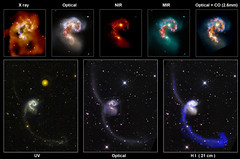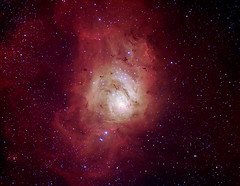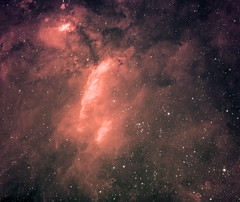After many years waiting for it, I have finally observed (and enjoyed!) my very first Total Solar Eclipse. It was on 14 November 2012 (still 13 November following time in UT) and I was 45 km south of Lakeland, Queensland Australia (I had to drive during the night trying to escape from the clouds in the coast near Port Douglas). Here you have some of the images I have obtained of this rare phenomenon.

My sequence of the Total Solar Eclipse on 13 / 14 November 2012, 50 km south from Lakeland, Queensland, Australia. I used a Skywatcher D 80mm, F 600mm, primary focus using CANON EOS 600D. All times given in UT and correspond to 13 Nov 2012. Credit: Ángel R. López-Sánchez (Australian Astronomical Observatory / Macquarie University, Agrupación Astronómica de Córdoba / Red Andaluza de Astronomía).
Some more pictures:

The sun rises, but the eclipse did already start. Credit: Ángel R. López-Sánchez (Australian Astronomical Observatory / Macquarie University, Agrupación Astronómica de Córdoba / Red Andaluza de Astronomía).

Image of the totality showing the brightest areas of the solar corona and some solar prominences close to the lunar limb (in red). Credit: Ángel R. López-Sánchez (Australian Astronomical Observatory / Macquarie University, Agrupación Astronómica de Córdoba / Red Andaluza de Astronomía).

Image of the totality showing the diffuse solar corona, but the brightest areas are overexposed. Credit: Ángel R. López-Sánchez (Australian Astronomical Observatory / Macquarie University, Agrupación Astronómica de Córdoba / Red Andaluza de Astronomía).

Diamond ring, the first light of the Sun coming after the totality. Credit: Ángel R. López-Sánchez (Australian Astronomical Observatory / Macquarie University, Agrupación Astronómica de Córdoba / Red Andaluza de Astronomía).

HDR (High Dynamic Range) image combining 20 individual frames with different exposition times. Credit: Ángel R. López-Sánchez (Australian Astronomical Observatory / Macquarie University, Agrupación Astronómica de Córdoba / Red Andaluza de Astronomía).
Posted in Amateur, Astrophotography, Moon, Observation, Optical, Personal, Solar System, Sun
Tagged 2012, astrophotography, eclipse, hdr, moon, sun, total solar eclipse













